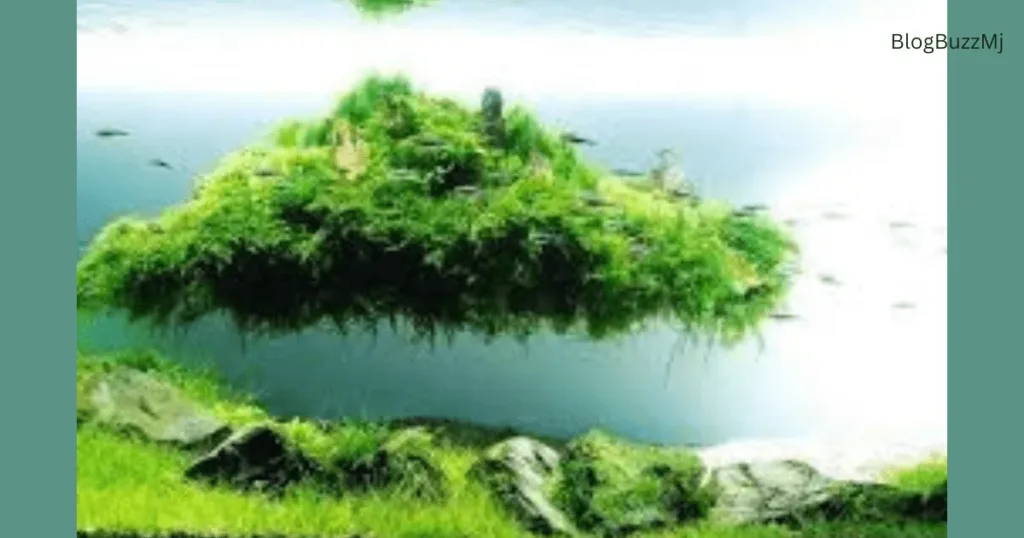Is Aquascaping a Hobby? Thrilling and Fascinating Things You Need to Know – 2023
Aquascaping, the art of designing and creating underwater landscapes in aquariums, has been gaining popularity as an art form in recent years. From simple to elaborate setups, aquascaping offers a unique and rewarding experience for those who are passionate about it. But Is Aquascaping a Hobby? In this blog, we will explore the pros, cons, and everything you need to know about aquascaping.
What is Aquascaping?
Aquascaping is an art that combines creativity, design, and aquatic life to create stunning underwater landscapes. The goal is to create a beautiful, natural-looking aquatic environment that simulates a specific ecosystem, such as a river or a coral reef. The art of aquascaping has evolved over the years, from simple setups with a few plants and rocks to elaborate and complex designs that mimic natural landscapes.

Aquascaping requires careful planning and execution to create a cohesive and visually appealing design. The process typically involves selecting a suitable aquarium, choosing appropriate plants, rocks, and other decorations, and designing the layout and hardscape. The hardscape, which refers to the non-living components such as rocks and wood, plays a crucial role in creating a realistic and natural-looking aquascape. The placement and arrangement of the hardscape can significantly affect the overall design and aesthetic of the aquarium.
Once the layout is complete, the next step is to add the aquatic plants and fish. The selection of plants and fish is critical to creating a healthy and balanced ecosystem. Aquatic plants not only add beauty to the aquarium but also play a vital role in maintaining water quality by absorbing harmful nutrients and providing oxygen for the fish. Similarly, the selection of fish should be based on their compatibility with the plants and the overall design of the aquarium. The number and type of fish should be appropriate for the size of the aquarium and the filtration system.
Aquascaping requires regular maintenance and care to ensure the health of the plants and fish. This includes monitoring water parameters such as temperature, pH, and nutrient levels, performing regular water changes, and pruning the plants. The use of CO2 injection and appropriate lighting is also essential for promoting plant growth and health.
In recent years, aquascaping with rocks and plants has gained popularity as a competitive sport, with aquascaping contests held around the world. These competitions typically involve creating a design within a limited time frame and are judged based on factors such as originality, creativity, and execution.
Is Aquascaping a Hobby?
Aquascaping offers numerous benefits beyond its aesthetic appeal which makes it a perfect fit for hobby. As mentioned earlier, it can be a great way to reduce stress and anxiety, provide a sense of accomplishment, and foster creativity and artistic expression. It also offers an opportunity to learn about aquatic life and their natural habitat, promoting environmental awareness and education. Let’s discuss more in detail below.
Types of Aquascaping
There are several types of aquascaping, each with its own unique style and design principles. Here are a few of the most common types:
Nature Aquarium Style
This style of aquascaping was popularized by Takashi Amano and focuses on creating a natural-looking underwater landscape. It typically involves a lush carpet of foreground plants, a variety of mid-ground plants, and a few tall background plants. The hardscape is arranged in a way that mimics a natural landscape, such as a rocky stream or a mountainous forest.
Dutch Style
This style of aquascaping emphasizes bright and colorful plants arranged in a precise and geometric pattern. The layout typically involves a combination of stem plants, rosette plants, and ground covers, arranged in rows and groups. Dutch-style aquascapes often include little or no hardscape, with the focus primarily on the plants themselves.
Iwagumi Style
This style of aquascaping is focused on creating a minimalist design with a few carefully placed rocks and a sparse amount of plants. The layout typically includes a single focal point, such as a large rock or a single stem plant, and the hardscape is arranged to create a sense of balance and harmony.
Biotope Style
This style of aquascaping aims to recreate a specific ecosystem or habitat, such as a river or a coral reef. It often includes a combination of plants and animals that are native to the ecosystem being recreated. The hardscape is arranged to mimic the natural features of the habitat, such as rock formations or coral structures.
Paludarium Style
This style of aquascaping involves creating a combination of an aquatic environment and a terrarium for land-based plants and animals. The hardscape is arranged to create a distinct separation between the aquatic and terrestrial areas, with the plants and animals arranged accordingly.
Each of these styles of aquascaping requires a different approach and design principles, and the choice of style will largely depend on personal preference and the desired outcome. Whether you prefer a naturalistic or more geometric approach, aquascaping offers a wealth of creative possibilities for designing beautiful and unique underwater landscapes.
Pros of Aquascaping
Relaxation and Stress Relief
Aquascaping is known for its calming and relaxing effect on the mind. Watching fish swimming in a beautifully designed aquarium can be a great way to reduce stress and anxiety.
Creativity and Artistic Expression
Aquascaping is an art form that allows for creative expression. From selecting the right plants and decorations to designing the layout and hardscape, aquascaping provides endless opportunities to express oneself artistically.
Learning Experience
Aquascaping is a great way to learn about aquatic plants, fish, and their natural habitat. It requires research and knowledge of different species, their requirements, and how they interact with each other.
Aesthetic Appeal
A well-designed aquascape can be a beautiful addition to any home or office. It can serve as a centerpiece and enhance the overall décor of the room.
Sense of Achievement
Successfully creating and maintaining an aquascape requires patience, dedication, and hard work. Seeing the growth and development of the plants and fish in the aquarium can give a great sense of achievement.
Cons of Aquascaping
High Cost
Setting up an aquascape can be expensive, especially if you are aiming for a large, elaborate setup. The cost of equipment, plants, fish, and decorations can quickly add up.
Time-Consuming
Maintaining an aquascape requires a significant amount of time and effort. It involves regular water changes, pruning, and monitoring water parameters to ensure the health of the fish and plants.
Technical Knowledge
Aquascaping involves knowledge of different equipment, lighting, and filtration systems. It requires a certain level of technical knowledge to create a suitable environment for the plants and fish.
Risk of Failure
Aquascaping is not without its risks. A small mistake in water chemistry or lighting can lead to the death of fish and plants. This can be frustrating and discouraging, especially for beginners.
Limited Space
Aquascaping requires space for the aquarium, equipment, and plants. It may not be a suitable hobby for those with limited space or living in small apartments.
Tips for Successful Aquascaping
Research and Plan
Before starting an aquascape, research different plants, fish, and their requirements. Plan the layout and hardscape to ensure a cohesive design.
Invest in Quality Equipment
Investing in quality equipment such as lighting, filtration, and CO2 systems can go a long way in creating a successful aquascape.
Patience and Dedication
Aquascaping requires patience and dedication. It takes time for plants to grow, and regular maintenance is necessary for the health of the fish and plants.
Regular Water Changes
Regular water changes are crucial for the health of the fish and plants. It helps to remove toxins and maintain the proper water parameters.
Start Small
For beginners, starting with a small aquarium can be a good way to learn and gain experience before moving on to larger setups.
If you’re interested in learning more about aquascaping, there are many aquascaping courses available that can help you expand your knowledge and skills. These courses cover a range of topics, from basic techniques to advanced design principles, and can be a great way to connect with other aquascaping enthusiasts. Consider enrolling in a course to take your aquascaping hobby to the next level!
Conclusion
In conclusion, Is Aquascaping a Hobby? Yes it is. Aquascaping is indeed a hobby that can provide a great source of creativity, learning, and relaxation for enthusiasts. It offers a unique and rewarding experience, but it also requires time, effort, and investment. Before starting an aquascape, it’s important to research and plan, invest in quality equipment, and be patient and dedicated. With the right approach and mindset, aquascaping can provide a sense of accomplishment and beauty to your life.
However, it’s important to weigh the pros and cons and consider if it’s the right hobby for you. If you are passionate about aquatic life and enjoy the challenge of creating a beautiful underwater world, then aquascaping could be the perfect hobby for you. In the end, the benefits of aquascaping outweigh the challenges, and with the right approach and mindset, it can provide a fulfilling and enjoyable hobby for years to come.
FAQ
Q) How much does aquascaping cost?
The cost of aquascaping can vary greatly depending on a number of factors, including the size and complexity of the aquarium, the types of plants and materials used, and the level of experience of the aquascaper.
For a small, simple aquascape, the cost could be relatively low, with just a few plants and basic hardscaping materials such as rocks or driftwood. However, for larger or more complex aquascapes, the cost can add up quickly.
Some of the expenses involved in aquascaping can include:
Aquarium
The cost of the aquarium itself can range from a few hundred dollars for a smaller tank to several thousand dollars for a larger custom-built aquarium.
Lighting
The lighting system is a crucial component of an aquascape, and the cost can range from a few hundred dollars to several thousand dollars depending on the type and quality of the lighting system.
Substrate
The substrate is the material that goes on the bottom of the aquarium, and the cost can range from a few dollars for basic gravel to several hundred dollars for high-quality nutrient-rich substrate.
Plants
The cost of plants can vary depending on the type and size of the plant, with some exotic or rare species costing significantly more than others.
Hardscaping materials
This includes materials such as rocks, driftwood, and other decorative elements that can add to the aesthetic appeal of the aquascape. The cost can vary depending on the type and size of the materials used.
Filtration system
A good filtration system is essential for maintaining a healthy aquarium, and the cost can range from a few hundred dollars for a basic system to several thousand dollars for a high-end system.
CO2 system
A CO2 system is often used in aquascaping to provide plants with the necessary carbon dioxide for photosynthesis. The cost can range from a few hundred dollars for a basic system to several thousand dollars for a more advanced system.
Overall, the cost of aquascaping can vary widely depending on the specific needs and preferences of the aquascaper. It is possible to create a beautiful and healthy aquascape on a budget, but for more complex or larger-scale projects, the cost can be significant. Aquascaping equipments can be purchased at several E-commerce sites like Amazon , Alibaba etc.



